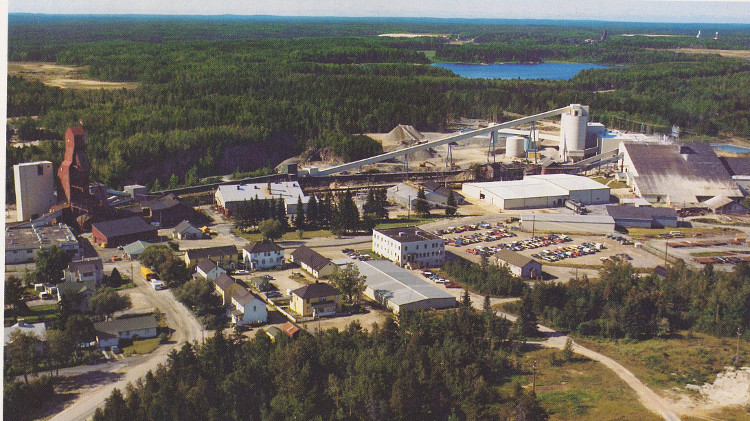Modular construction might not be new for the mining industry, but there is an uptick in the number of projects considering some form of modular construction with the hopes of shaving precious months, weeks or even days off the schedule.
So why the sudden increase in popularity in modular construction and is it the right approach for every project? Most would agree that some form of modularization could benefit a project, but before jumping onto the modular construction bandwagon, it’s a good idea to look closer at the extra costs to see if saving some time is worth the financial risk.
So, what is modular construction? The Construction Industry Institute, which has plenty of resources to help facilitate modular construction to improve project performance, defines it as a major section of a plant resulting from a series of remote assembly operations and may include portions of many systems; usually the largest transportable unit or component of a facility.
Modular construction offers plenty of benefits, including better quality, safer construction with less work being completed on a congested construction site and, most importantly, an opportunity to compress an already demanding schedule. But modular construction is not a one-size-fits-all solution. Applications of modular construction vary depending on the industry, the system and project-specific constraints.
One application of modular construction gaining popularity in the mining industry lately is the installation of loading pockets at the bottom of mine shafts, where typically all work in the shaft is determined to be on the critical path. In this application, the loading pocket structure is divided into several large, preassembled steel modules that are then lowered down, sometimes a thousand-plus metres, to shaft bottom and assembled into a complete structural system. The total weight of loading pocket structures may range from 300 tonnes to 1,000 tonnes. Average-sized modules typically weigh between five and 15 tonnes, but some modules could weigh 50 tonnes or more. The benefit is clearly to save time by completing as much work as possible on the surface rather than the time-consuming process of sending bundles of loose steel underground to erect or “stick-build” at the shaft bottom, where space is limited and where the underground work environment presents a unique set of hazards.
Some of the additional costs associated with modularizing a loading pocket include the following:
Increased planning and coordination. Large-scale mining projects involve many key stakeholders who are responsible for delivering their work on time to ensure there are no delays that could jeopardize the start of installation. The installation sequence of the modules is carefully studied to prevent any possible interferences. Special long lead items are identified and procured from vendors.
Module design and engineering. Starting with defining the modules early in the design phase, each module is structurally evaluated and designed to meet minimum safety factor requirements for handling and suspending modules in the mine shaft. Module connections are evaluated to ensure ease of fit-up with previously installed modules, requiring early contractor engagement.
Specialized equipment design and engineering. Lowering large modules down a mine shaft often requires customized shaft conveyances and cranes for handling and positioning modules designed by a specialized engineering team familiar with shaft work. Other equipment designed and fabricated to meet the installation requirements include custom spreader frames, special rigging components, access platforms and ladders and temporary support structures. By contrast, stick-build steel is typically planned and installed by tradespeople requiring minimal engineering support and standard rigging.
Engineered lift plans. The handling of each module is evaluated in each critical position, considering the mass, location of the centre of gravity and location of module lift points, until the module reaches its final position near the bottom of the shaft. Often several lift plans are required for each module to safely load and transport to site, unload at site and store, then lift and lower the module into final position.
Trial lifts and preassembly. Trial lifts are completed on critical modules to verify the location of the centre of gravity and to check plumbness. Preassembling on surface may be required prior to installation to avoid fit-up issues in an effort to de-risk the project.
Shipping oversized loads. Modules assembled at the fabricator’s shop are sometimes shipped long distances to a remote site often requiring a logistics study, escorts, special permits and insurance, and longer travel distances due to route restrictions.
Fast-tracking fabrication. More fabrication resources may be required to meet the project requirements of trial lifts, preassembly and a demanding schedule for rapid installation. This sometimes requires engaging more fabrication shops to ensure the modules arrive on the scheduled installation date or risk a costly delay that could quickly evaporate any potential cost savings.
Now that we have looked at some of the additional costs associated with modularizing a loading pocket, let’s consider the benefits. In the mining industry, the biggest benefit is typically saving time. Modular construction is considered on most projects because it provides the opportunity to complete work concurrently, off the schedule’s critical path. However, to properly evaluate if modular construction offers an overall benefit to the project, it is important to accurately estimate the benefits of compressing the schedule in terms of potential overall project cost savings.
This can be done by evaluating the net present value (NPV) of the project based on two different scenarios. The first scenario, to stick-build the loading pocket as originally scheduled and then start production mining. The second scenario, to incur the additional modularization costs and complete construction earlier, saving on indirect construction costs, and start production mining sooner, possibly improving the NPV of the project with earlier positive cash flows.
Understanding the cost savings potential when attempting to shorten the construction schedule and the additional costs associated with modular construction is key to making informed decisions that will benefit the overall project. Because most of the cost savings benefits are directly tied to the schedule, delays pose the biggest financial risk with modular construction, making it a balancing act between risk and reward.
Matthew Hallett, P.Eng., is a specialist engineer civil/structural at Cementation Canada Inc.




